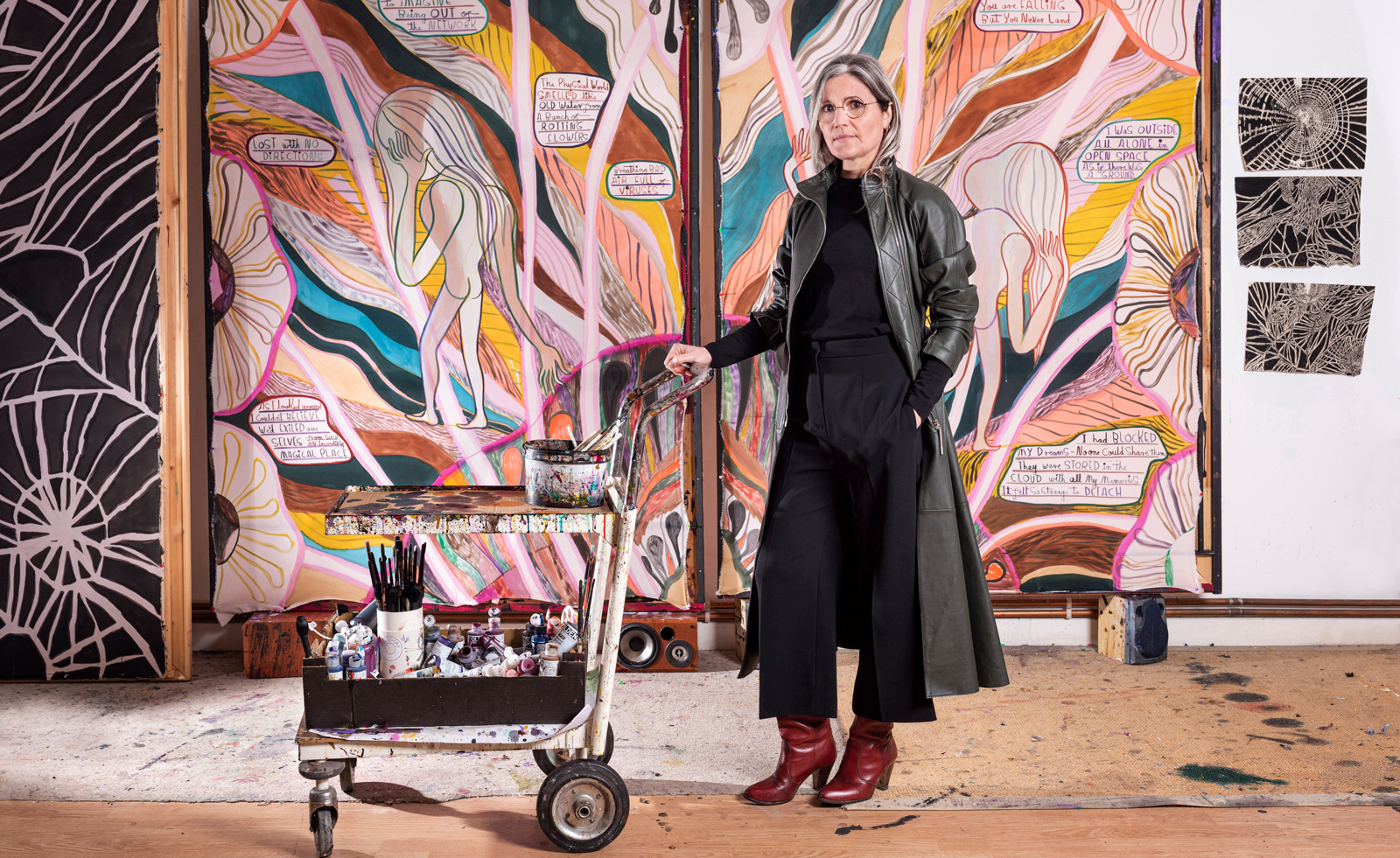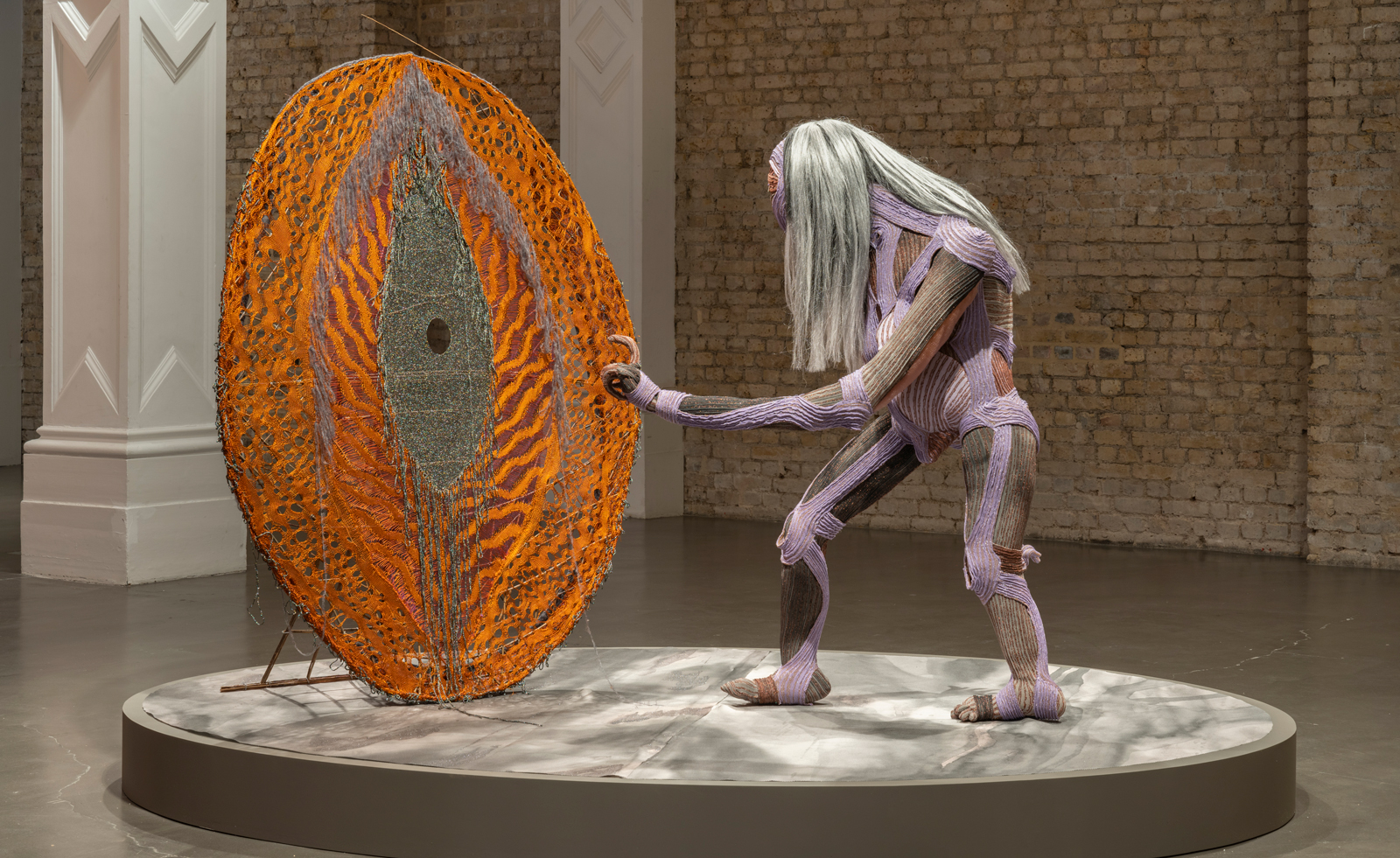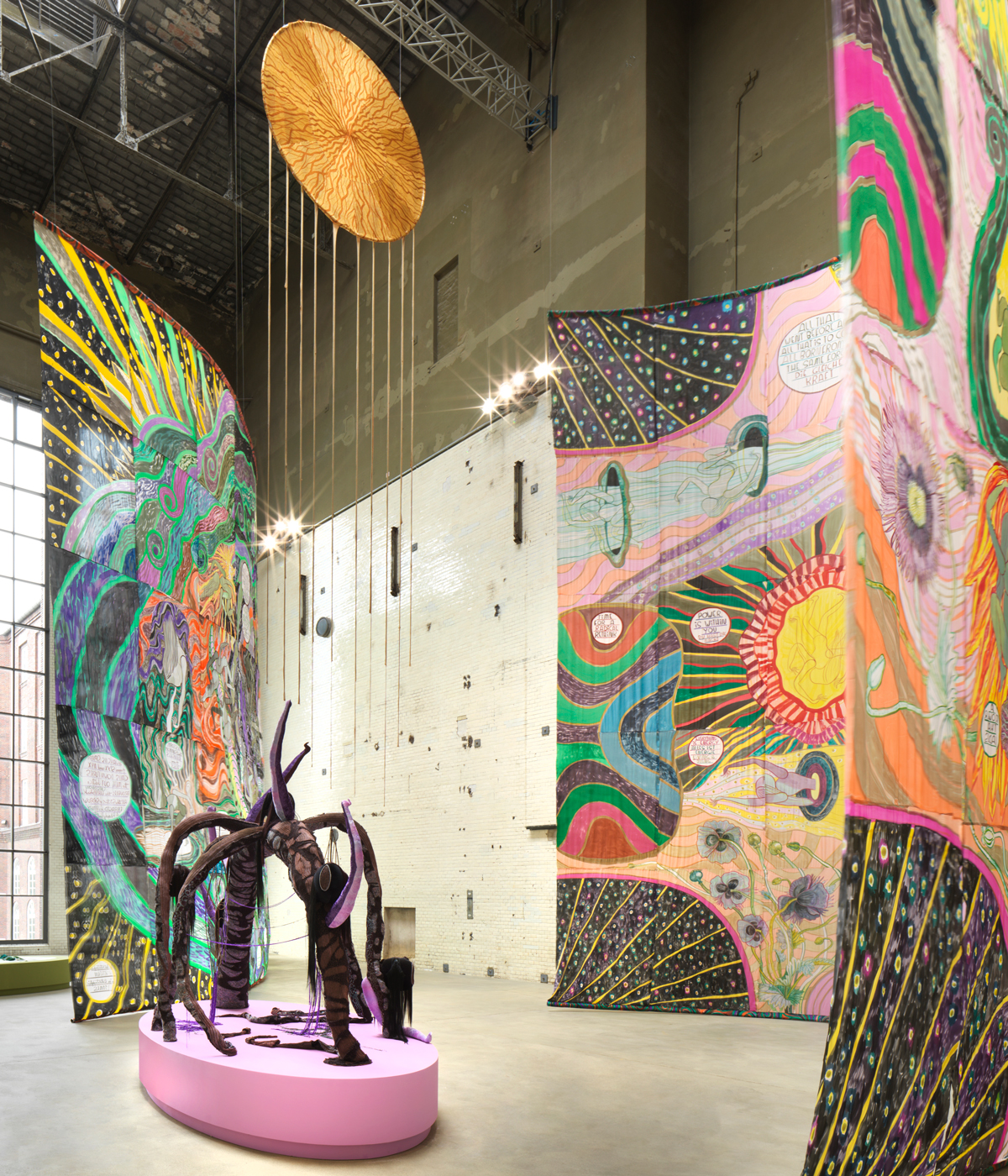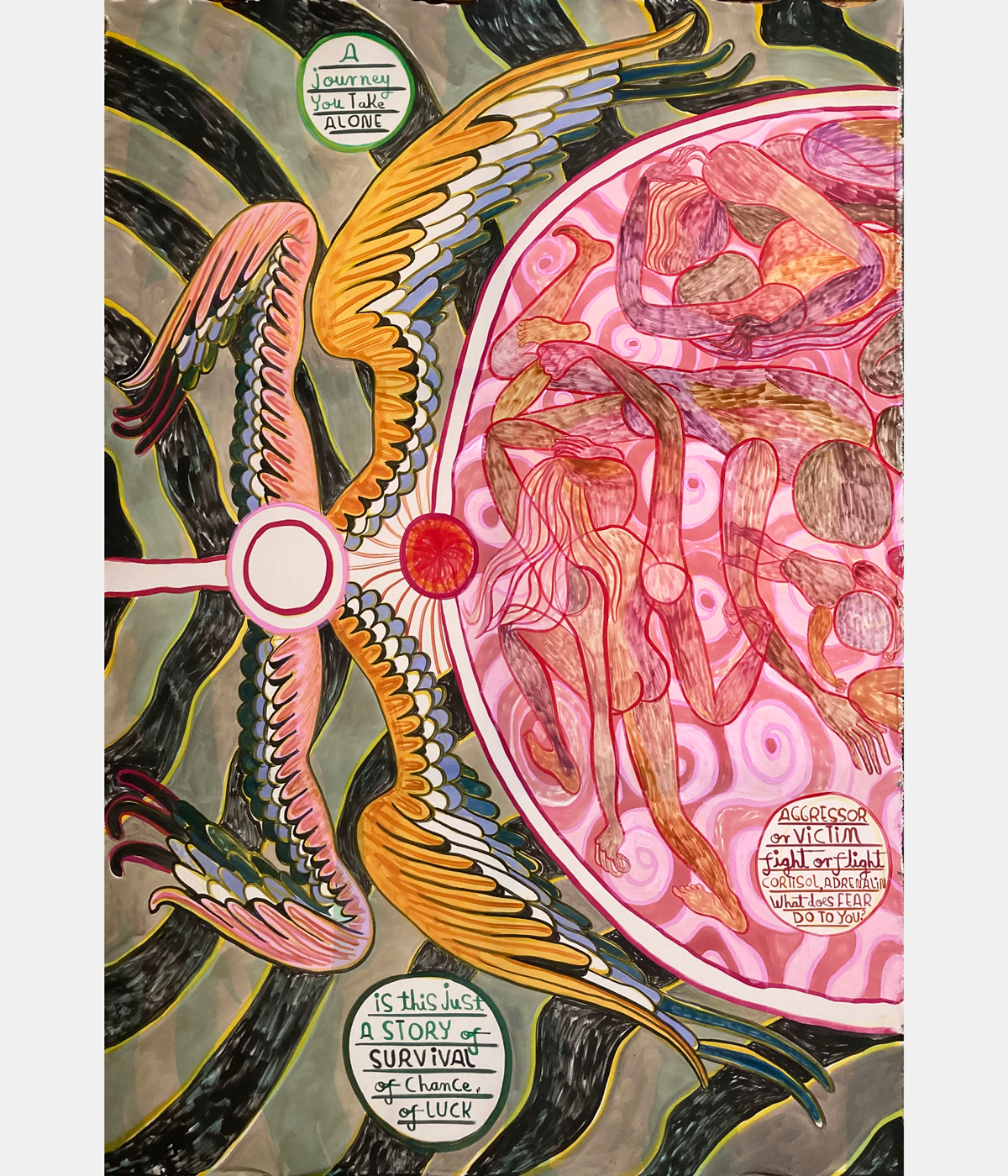
‘This period in my life, I can be somewhere and have a really different experience of a place,’ says British artist Emma Talbot, who currently lives in the Italian town of Reggio Emilia, after winning the 2019-2021 Max Mara Art Prize for Women, and spending ‘a totally transformative’ six months residency in Italy that comes with the prize.
‘Of course, you take all of the things you see around you back to the studio because they are on your mind, and as a real cliché, quite subtle things like colour and light change in your work,’ continues Talbot, whose work has been included in an increasing number of solo and group exhibitions in Denmark, Germany, The Netherlands, Italy and the UK since she was awarded the prize. (We visited ‘The Age/L’Età’, her Max Mara Art Prize show at Whitechapel Gallery, in 2022, while Talbot’s works lit up London’s Piccadilly Circus in 2021.)
Emma Talbot: ‘We don’t see very often narratives of elderly women’

Talbot paints, draws, makes sculptures and animations. In her exploration of materials, she has discovered that painting on silk serves her well because the lightness and the softness of the silk allow her to create enormous works without adding heaviness or compromising the dimensions and presentation of the work. ‘I wanted to find and choose a surface for painting that hadn’t already been decided for me, an alternative to the white canvas. So it felt quite liberating to find silk, a beautiful material that I really love,’ Talbot says.
Her work is about the experience of being human but also about working with materials and aesthetics generally considered feminine. ‘I decided deliberately to use them as something that has potency rather than fragility,’ the artist says. ‘First of all I would say that I am an artist. I wouldn’t say that being a woman artist defines me more. But the truth is that I have made my work a space where I can communicate my experience, and that comes from my position of being a woman in the world. I am affected by being a woman all the time because it is a very particular experience. So inevitably my work reflects that, and what I create is really bound up with being a woman, which is something I really notice all the time’.

Deeply influenced by feminist writers, Talbot employs storytelling as a thread that binds together all of her work. ‘As women, our experiences have been taught to us, and [these] don’t always meet how our real ones have been. I thought that if we take the opportunity to tell our own life experiences, it would be changing the perceptions about an idea,’ says Talbot, who in her art captures stories that haven’t always being fully explored.
The main character in her body of work The Age/L’Età is a naked elderly female figure with long grey hair, a representation of the artist herself in the future. ‘We don’t see very often narratives of elderly women [as] key characters, therefore I wanted to address this idea of how the ageing of women is presented to us, as if it is something disastrous that we should be supposed to push away from us and avoid,’ says Talbot. ‘This elderly woman figure in my work becomes someone quite beautiful and quite credible in terms of what she can do, but it is particular and weird to see how unusual it is. So it was a real decision to paint the figure always naked. I wanted her to be really elderly, something that you would see explicitly, without improving her appearance compared to how an elderly naked woman would look, and if you thought that in any way it affronted you, then you will be able to ask yourself, why, why would you think that, why would that be problematic?'
Emma Talbot is exhibiting as part of a group of 60 artists in ‘The Irreplaceable Human’ at the Louisiana Museum of Modern Art in Denmark until 1 April 2024, htgalerieonrust.nl
Her work is also on view in ‘Emma Talbot: In the End, the Beginning’ is at Kesselhaus, KINDL Berlin, until 26 May 2024, kindl-berlin.com








